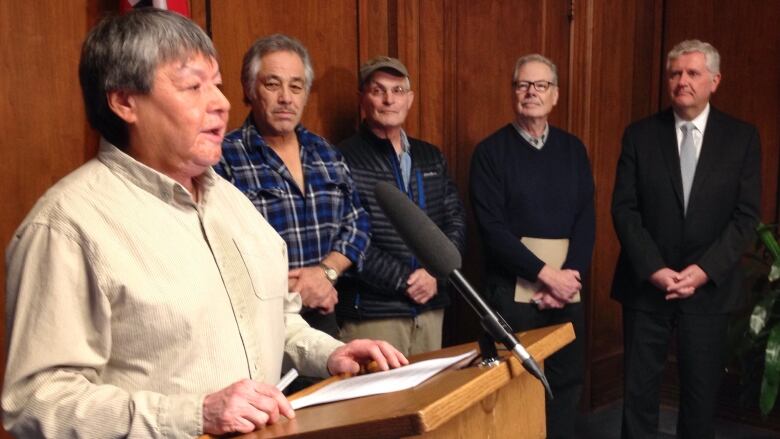Revised UNESCO bid submitted for Manitoba-Ontario boreal forest
Original proposal for Pimachiowin Aki deferred by world heritage committee in 2013

Manitoba is trying once again to get special UNESCO recognition for the boreal forest the province shares with Ontario.
The international world heritage committee deferred Canada's bid in 2013 and asked for a revised proposal for the area called Pimachiowin Aki, which means "the land that gives life." A coalition of the Manitoba and Ontario governments, as well as five First Nations, said it has done just that and will hand deliver the new 4,000-page nomination this week.
"We were surprised two years ago when UNESCO deferred their decision and told us they needed more information," said William Young, with Bloodvein First Nation and spokesperson for Pimachiowin Aki. "But the second bid for our nomination we have today is far better."
The revised bid is scheduled to be considered next year.
UNESCO advisory groups have raised questions about whether the area is unique enough to warrant a designation as a world heritage site. A consultant's report done for the Pimachiowin Aki Corporation, the non-profit agency behind the UNESCO bid, predicted the remote region may attract fewer than 1,000 people a year.
The corporation argues the area should be designated both a cultural and natural heritage site which if successful would be the first of its kind in Canada.
The revised bid delves deeper into the connection First Nations have to the land, Young said.
"We have brought in more people into our circle to prepare for this bid for our nomination. Some of them are experts in Canada and outside Canada. Not only did we learn from them but they also learned from us."
More stories from First Nations communities are included this time around, as well as more maps showing cultural sites like ancient rock paintings and traplines.
"The Anishinabe people have been taking care of the water, the wildlife, the plants and the air as part of our cultural tradition for thousands of years," Young said. "That's because we know we cannot live without the land and it needs our care. Our elders have taught us that the Creator expects us to take care of the land for everyone."
Young said it was his grandfather who first instilled in him a sense of duty for protecting the land.
"He said that it'll be your generation to watch out for these industrialists not to destroy the land and that's what I'm here for," said Young. "I've been trying to do that all my lifetime to keep his legacy alive."
The Manitoba and Ontario governments have poured millions of dollars into the bid. Manitoba has put up the lion's share with $8 million in funding and spent $320,000 to rework the bid following its rejection in 2013.
Premier Greg Selinger said the money is worth it. The special designation will encourage eco-tourism and help protect the land from development, he said.
"It's an investment for all time, for all citizens of the world and, in particular, an investment in our partners, the First Nations on the east side that are looking after the land and have for generations," Selinger said.
"The UNESCO designation gives it worldwide cache. It gives it worldwide credibility. It puts us on the international stage."
Pimachiowin Aki is 33,400 square kilometres almost half the size of New Brunswick. It is a large stretch of relatively untouched boreal forest and home to five First Nations that continue to practise traditional land use.
With files from CBC News












_(720p).jpg)


 OFFICIAL HD MUSIC VIDEO.jpg)
.jpg)



























































































